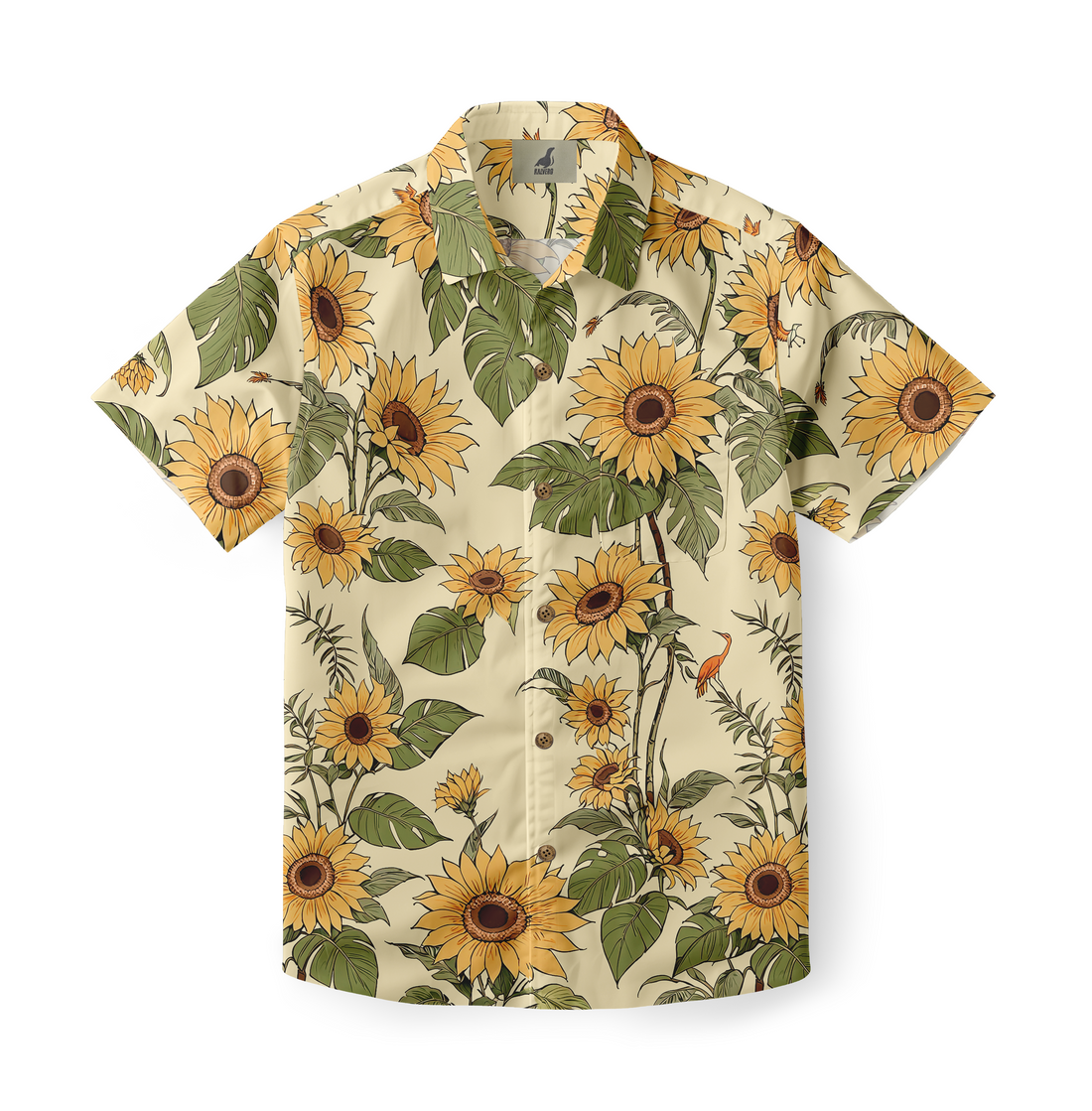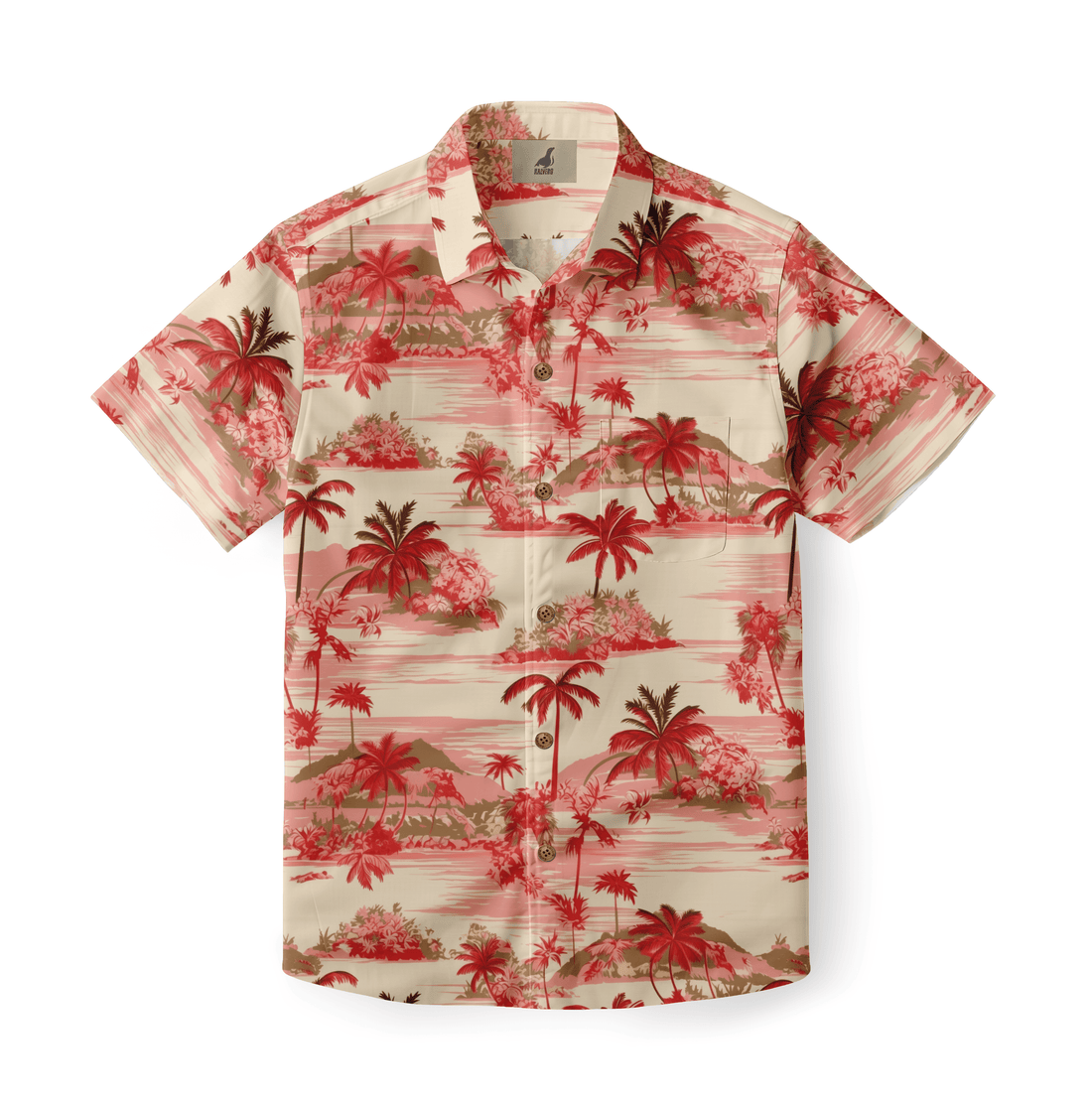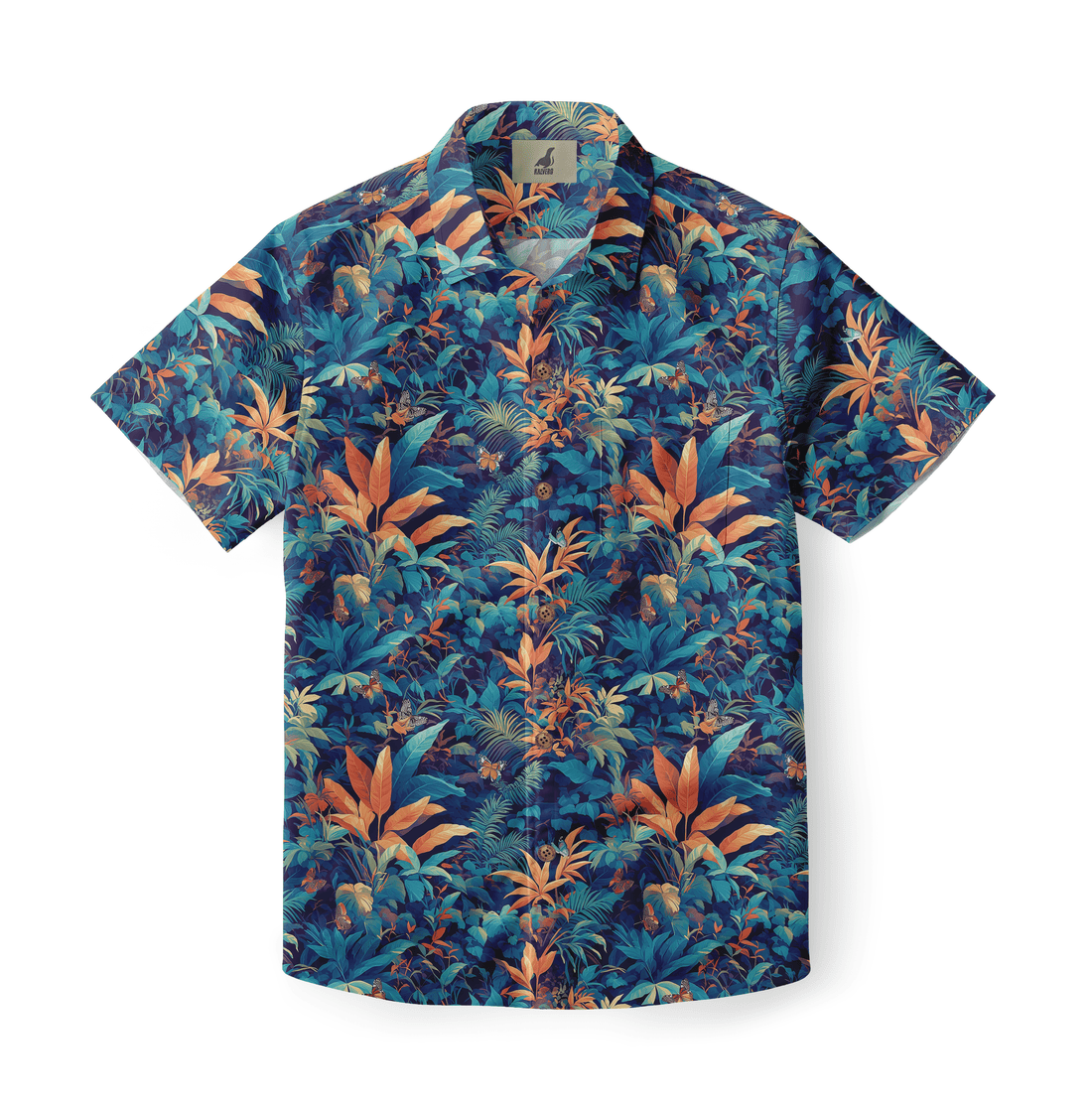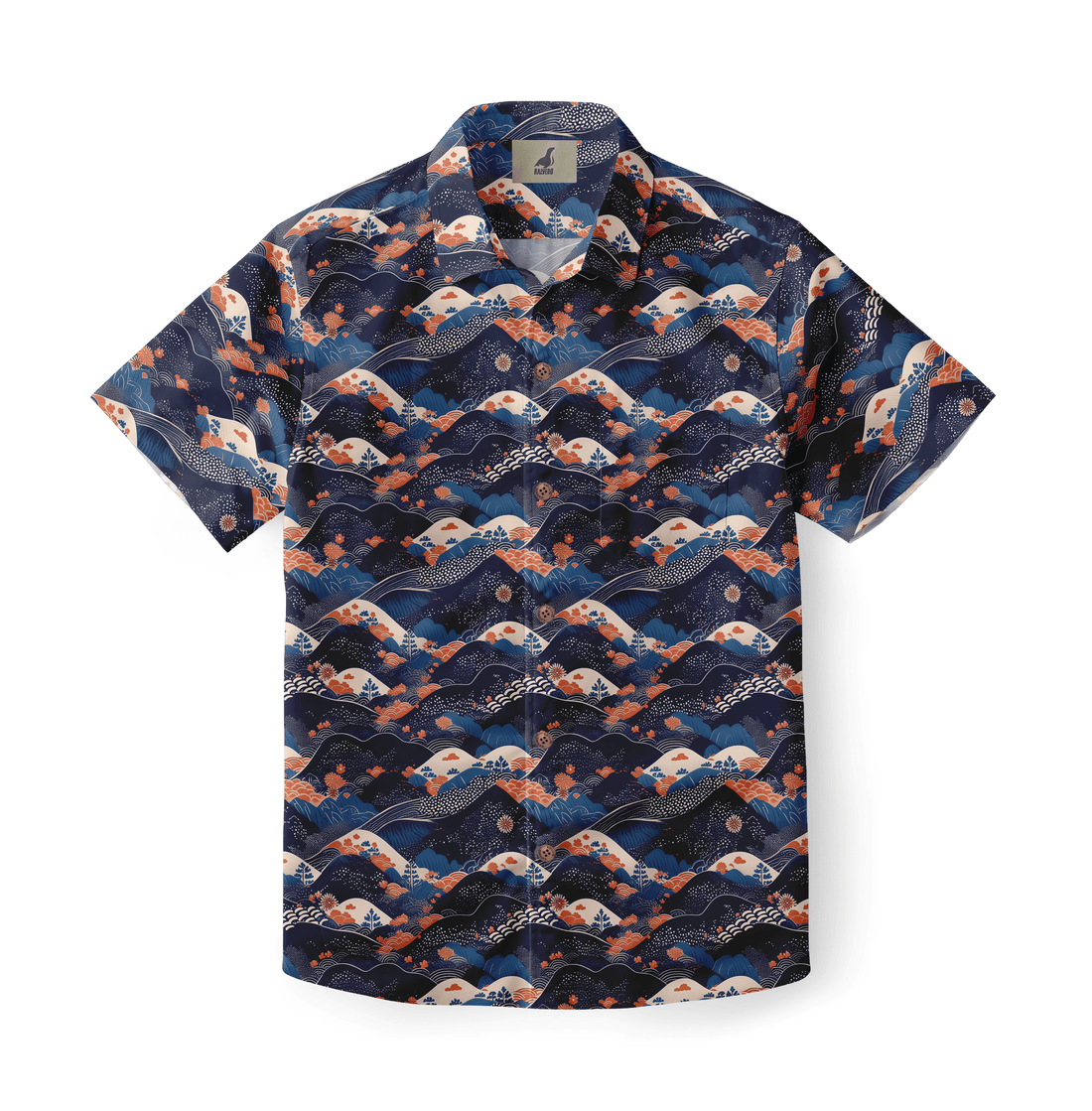Are Hawaiian Shirts Good for Bachelor and Bachelorette Parties? is the central question many hosts ask when planning lively pre-wedding events. Aloha prints bring instant visual cohesion and a relaxed vibe to group activities outdoors. Hosts who pick matching shirts reduce wardrobe decision stress for attendees. Coordinated shirts can perform double duty as gifts and event identifiers during travel. Practical factors such as climate, activity level, and venue rules should guide selection. When chosen thoughtfully, party shirts support brandable merchandise and memorable photography. Groups often use shirts to unify mixed guest lists across genders and ages. Attention to sizing, fabric, and finish prevents discomfort during long celebrations. Overall, the real benefit lies in matching mood with functional clothing for social ease.
Practical Considerations
Are Hawaiian Shirts Good for Bachelor and Bachelorette Parties? relies on practical choices such as fabric and fit. Lightweight rayon and breathable cotton perform best for daytime outdoor parties. For nighttime events near water, select quick-dry blends that resist chill. Consider activity level when picking sleeve length and hem shape for freedom of motion. Hosts must check venue rules to avoid costume restrictions and safety problems. Bulk orders allow for consistent sizing but require accurate measurements and sample checks. Personalized printing or embroidery increases per-unit cost yet raises perceived value among guests. Packaging shirts as welcome gifts enhances guest experience and supports event branding. Planning these basics reduces surprises and preserves host sanity on the big day.
Styling Themes and Tone
Are Hawaiian Shirts Good for Bachelor and Bachelorette Parties? becomes easier to decide when you define an event tone first. Bright, saturated florals suit energetic daytime beach parties. Muted palettes and subtle prints read more refined at evening rooftop events. Mixing matching shirts with complementary neutrals helps guests layer for variable climates. Thematic shirts tied to the couple’s story create memorable keepsakes and conversation starters. Coordinate shirt styles for the bridal party, groomsmen, and VIPs to differentiate roles visually. Avoid overly costume-like designs if the event requires sophistication. Thoughtful styling helps maintain both festivity and dignity for diverse guest groups. Clear visual rules support consistent photography and reduce post-event confusion.
Venue, weather, and comfort choices
Venue choices shape the most important apparel decisions for bachelor and bachelorette events. Outdoor beach venues require sun-safe fabrics and light colors to reflect heat. Tropical textures like rayon wick moisture and drape well for photos. For boat parties, prioritize non-slip footwear and short hems for safety. Indoor lounges may favor silk-blend shirts to elevate the look while keeping breathability high. Windy cliffside venues call for secure closures to prevent flapping fabric. When planning multi-venue days, provide layered options so guests can adjust easily. Keep a stash of safety pins and extra buttons for quick fixes. Matching shirts should enhance comfort to let guests focus on celebration rather than wardrobe.
Coordinating bridal parties, groomsmen, and guests
Coordinating groups requires clear visual hierarchy to avoid confusion at events. Assign distinct shirt variants for the couple, bridal party, and general guests. Use contrast in trim, color, or embroidery to mark VIP roles subtly. Consider offering different fits, such as tailored cuts for key members and relaxed fits for general attendees. Provide size guides and sample robes at welcome gatherings to confirm fit. When guests receive shirts as gifts, include care cards and a brief style note to reduce returns. Coordination promotes cohesive group photos and eases organization during transitions. Thoughtful role differentiation balances unity with individual comfort and personal expression.
Fabric, fit, and motion for party activities
Selecting fabric and fit is crucial when guests will dance, swim, or tour together. Stretch blends and soft cotton prevent restrictive movement during active games. Avoid brittle synthetics that cause chafing under warm conditions. Look for reinforced seams near stress points for durability across multiple wears. Consider double-stitched hems where frequent motion occurs. For swimming-adjacent events, prefer quick-dry linings and corrosion-resistant buttons. Offer half-sizes or adjustable tabs to accommodate diverse body shapes. Proper construction reduces mid-event wardrobe failures and keeps the focus on festivities. When quality meets comfort, guests remain engaged and hosts avoid interruptions.
Accessory, footwear, and layering tips
Accessories and footwear transform simple shirts into coordinated ensembles that suit varied event segments. Pair aloha shirts with neutral linen trousers for refined daytime looks. Layer with unlined blazers for cooler evening events without losing print visibility. Choose sandals with good traction for beach games and loafers for receptions. Add matching pocket squares, sun hats, or lei-style garlands to integrate local motifs and add ceremony. Consider lightweight scarves for women to convert daytime shirts into semi-formal wraps. Provide a small accessory kit at check-in for last-minute styling fixes. These touches elevate the shirts from novelty pieces into versatile wardrobe elements for the entire weekend.
Quick party outfit ideas for Hawaiian-shirt events
-
Day beach bash: bright floral shirt, linen shorts, water-friendly sandals
-
Sunset cocktail: muted aloha, tailored chinos, suede loafers
-
Pool party: short-sleeve tech aloha, swim trunks, waterproof watch
-
Night dance: dark-hued print, slim trousers, slip-on dress shoes
-
Welcome brunch: pastel aloha, white denim, casual sneakers
Party outfit ideas detailed and contextualized
Each outfit idea above supports specific event needs and ensures guests appear cohesive. For a beach bash, bright florals read well in sunshine and group photos. Sunset cocktails benefit from muted aloha prints to transition elegantly into evening light. Pool party outfits focus on moisture management and secure footwear for safety. Night dance looks use darker palettes and tailored fits to match club lighting and movement. Welcome brunch outfits emphasize fresh pastels and casual comfort to start the weekend relaxed. These scenarios help hosts choose shirts that align with each event’s function and visual story.
Photography, branding, and social media capture
Photography planning maximizes the visual impact of coordinated shirts across content channels. Choose a primary and secondary color palette to maintain consistency in feeds. Instruct photographers on preferred angles and group arrangements to emphasize shirts in hero images. Use props such as leis, signage, or matching cups to reinforce event branding in stills and reels. Test shirt swatches under event lighting to ensure color accuracy and avoid post-edit fatigue. Encourage candid shots that show interaction rather than staged poses for authentic social engagement. Coordinated visual assets enhance long-term memorabilia and support post-event marketing or thank-you communications.
| Shirt Style | Best Setting | Practical Note |
| Bold Floral | Day beach, pool | Choose light fabric, check colorfastness |
| Muted Tropic | Sunset cocktail | Opt for silk blends or rayon |
| Technical Aloha | Boat party, active day | Prefer quick-dry, reinforced seams |
How to use the style table when ordering
Use the table to match shirt types to event moments and order accordingly. For daytime beachwear, prioritize light fabrics and larger prints for visibility. Muted tropic shirts perform well when paired with tailored trousers for evening segments. Technical aloha shirts suit active schedules such as boat tours and watersports. Confirm colorfast tests and seam reinforcement before bulk purchase to avoid mid-event issues. Order sample shirts to test both camera render and wear performance. Thoughtful matching reduces waste and improves guest satisfaction across diverse event timelines.
Sourcing, bulk ordering, and budget planning
Bulk procurement reduces per-unit cost while ensuring uniformity across guest shirts. Request pre-production samples and run wash tests before finalizing sizes. Negotiate staggered MOQs for phased events to reduce waste. Consider co-branded runs as sponsor-funded cost offsets for larger groups. Factor customs, packaging, and returns into your landed cost model. Choose a supplier that offers clear lead times and returns for defective items. Plan ordering milestones aligned with RSVP cutoffs and travel windows. Solid procurement planning prevents last-minute rush charges and leaves room for final fit tweaks.
Safety, inclusivity, and dress code clarity
Safety and inclusivity must inform any group apparel choice to protect guests and reputations. Provide alternate dress suggestions for guests who decline shirts for cultural or comfort reasons. Make clear that shirts are optional gifts, not mandatory uniforms, to avoid pressuring attendees. Choose flame-resistant trims near open flame entertainment and avoid choking hazards in children’s areas. Provide sizing inclusivity and accessible closures for diverse needs. Clear dress code communication reduces confusion at entries and supports a respectful atmosphere. Thoughtful policy keeps the fun accessible to all guests and guards against unintended exclusion.
Final verdict and action checklist
Are Hawaiian Shirts Good for Bachelor and Bachelorette Parties? Yes, when hosts match shirts to venue, activity, and tone. Prioritize breathable fabrics and secure fastenings for active schedules. Use role-differentiation and subtle trims to mark VIP status without costume-level theatrics. Order samples early and test colorfastness under event lighting. Prepare clear size charts and offer swaps on-site to handle fit mismatches. Provide styling notes and a small accessory kit at check-in for cohesion. Follow this checklist to achieve memorable photos and comfortable celebrations while maintaining respectful inclusivity for all attendees.
Frequently Asked Questions
Are Hawaiian shirts appropriate for mixed-gender bachelor and bachelorette crowds?
Mixed-gender groups benefit from aloha shirts because they provide a unifying aesthetic without enforcing strict gender roles. Select shirts in multiple cuts and fits to respect diverse body types and preferences. Offer a range of sizes and a few gender-neutral options to ensure everyone finds a comfortable fit. Balance bold patterns with neutral accessories to suit less adventurous guests. Make clear that shirts are optional and that alternative dress choices are welcome. This approach preserves group cohesion while honoring personal comfort. Hosts who prepare size-swapping stations at event check-in reduce friction and improve guest satisfaction.
How should hosts handle sizing and last-minute fit issues for matching shirts?
Hosts should order a small buffer of extra shirts across popular sizes to address last-minute fit needs. Arrange a quick try-on station during check-in to swap misfits immediately. Work with suppliers who permit minor same-batch returns or exchanges for unopened items. Include a brief care and fit card in each shirt package to reduce confusion. If space allows, arrange for a local alteration partner for small fixes like shortening or adding snaps. Provide a discreet option for guests who decline shirts to avoid awkward moments. Early RSVP collection with preliminary sizing reduces risky last-minute orders and supports smoother logistics.
Can Hawaiian shirts serve as sustainable swag without creating waste?
Yes, Hawaiian shirts can be sustainable swag when hosts plan thoughtfully. Order only the number of shirts justified by RSVPs, and avoid excessive overstock. Choose high-quality fabrics that guests will reuse beyond the event to extend garment life. Offer an opt-in model where guests select sizes to avoid unwanted gifts. Partner with suppliers offering recycled fabrics or low-impact dyes to reduce environmental footprint. Consider buy-back or donation programs for leftover shirts to support local charities. These measures reduce waste and align celebrations with broader ethical and sustainability goals, making shirts meaningful keepsakes rather than disposable souvenirs.








